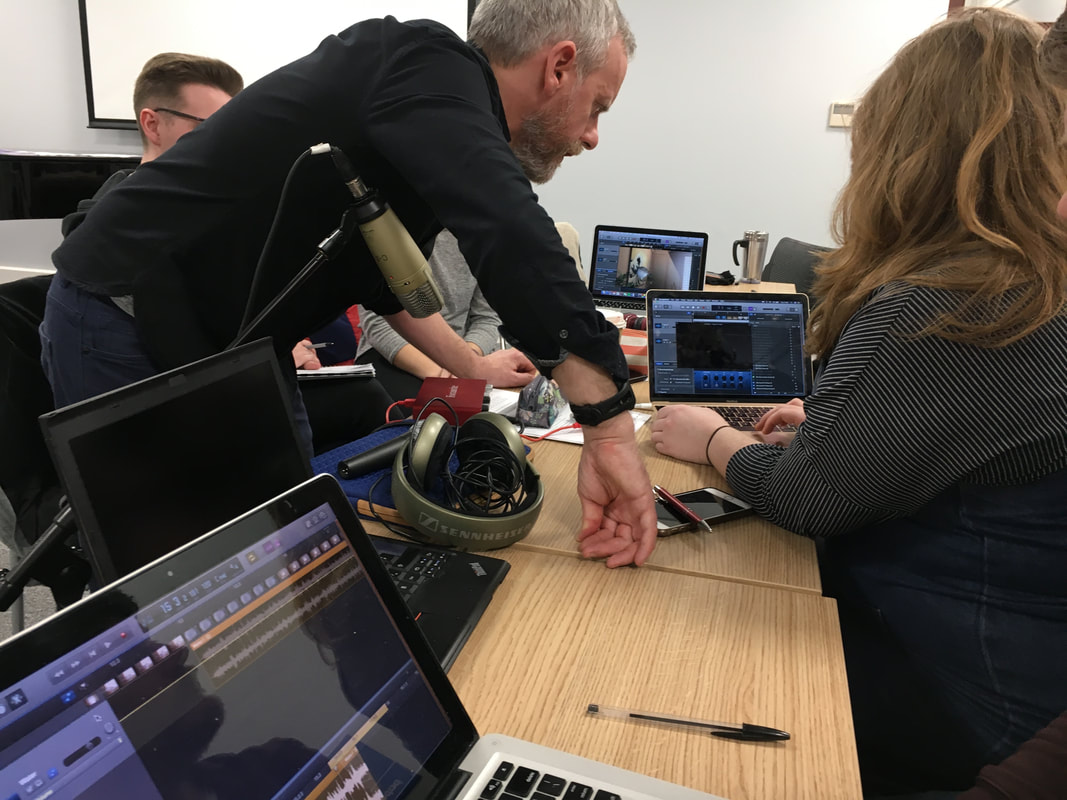|
I have thoroughly enjoyed the Creative Contexts for Learning in Music course at the University of Strathclyde for pre-service music teachers, which meets twice a week to prepare students for their remaining two school music placements, each six weeks in length. This class of twenty students welcomed me into their community, and I will miss them when they begin their placements in February. Paul Wickham, my host advisor, leads and organizes these classes. He is well-loved and respected by the class and I can see why: Paulʼs high expectations and practical knowledge are balanced by his sense of humor and constant communication. Laughter, music-making and lively discussions permeate these walls. For the past two weeks, Paul invited teaching artists from the community to share their expertise in jazz improvisation and music technology. The photo above captures the music technology session led by Craig Cuthbertson. Using online and recorded sounds, the class worked in teams to create a soundtrack for an animated short, Fugu, which is an assignment given in secondary music classes. Alan Benzie opened the Jazz Improvisation session by inspiring us with a live performance from his jazz trio. Their newest album, Little Mysteries, recently won best album in the Scottish Jazz Awards. Here is their piece, The Warrior Who Became a Tiger. Alan then gave a brief history of jazz: an African-American music genre originating in New Orleans with roots in blues and ragtime. Improvisation, syncopation, rhythm and call and response are some of the key elements. He then modeled how to teach these elements in the school music:
Alan then broke down an example of a New Oreans early groove known as the 2nd Line by having us clap each part of the kit drum - high hat, snare and bass drum - first in isolation and then simultaneously in three groups. Throughout the class, I was reminded of the Lincoln Centerʼs Let Freedom Ring series, which features Wynton Marsalis and Sandra Day OʼConnor and illustrates the ideals of American democracy through the lens of jazz. In todayʼs political climate, this series is worth posting - both as a valuable resource for integrating music in the social studies curriculum and as a reminder of the principles of which our country is founded.
1 Comment
6/1/2023 02:43:17 pm
Lovely blog, thanks for taking the time to share this.
Reply
Leave a Reply. |
Lorrie HeagyThis is a personal blog, sharing my experiences living in the UK from January - June 2019 as a Fulbright Distinguished Award in Teaching scholar. This blog is not an official site of the Fulbright Program or the U.S. Department of State. The views expressed on this site are entirely my own and do not represent the views of the Fulbright Program, the U.S. Department of State, or any of its partner organizations. Archives
July 2019
Categories
|

 RSS Feed
RSS Feed
